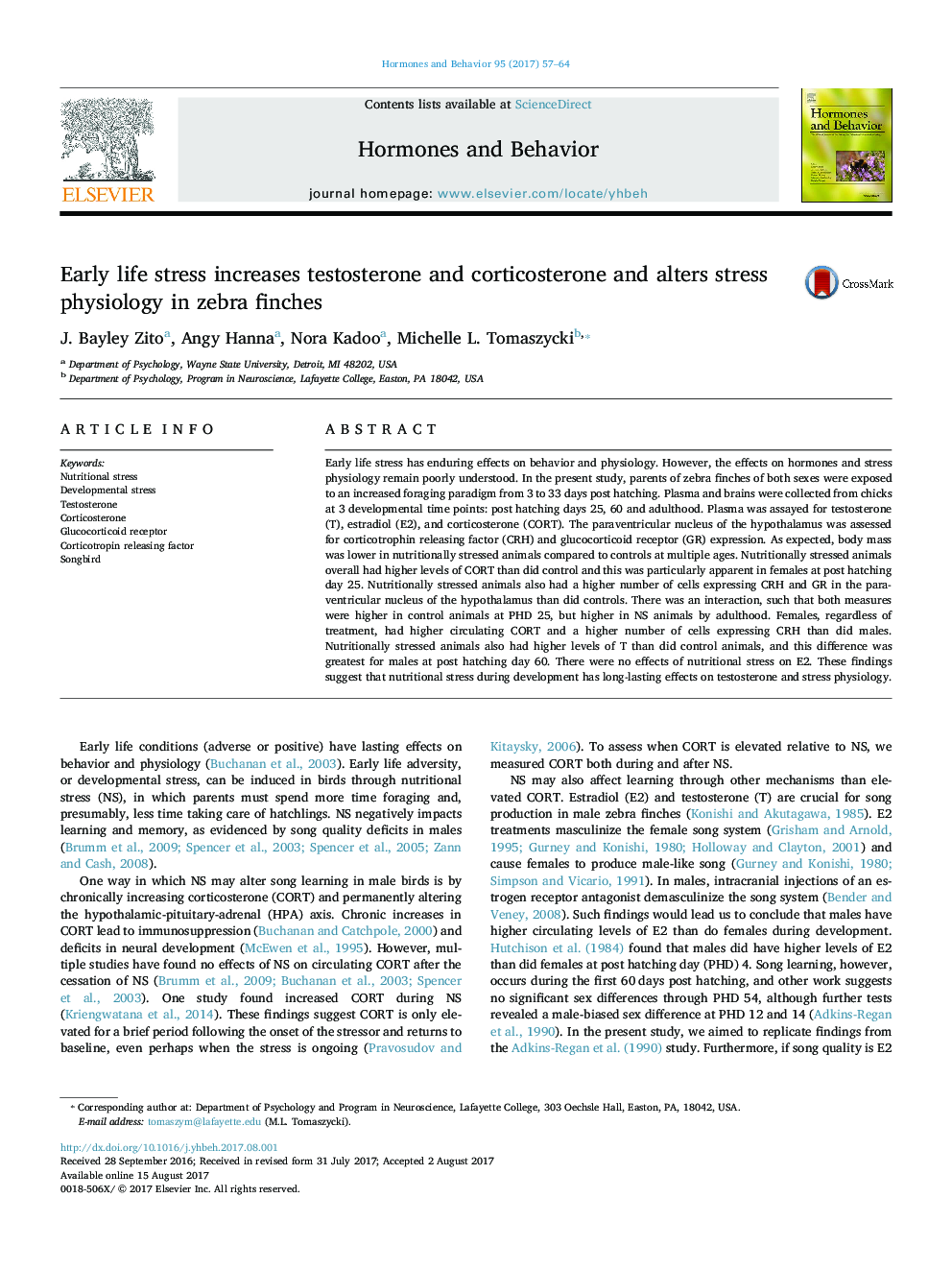| Article ID | Journal | Published Year | Pages | File Type |
|---|---|---|---|---|
| 4931073 | Hormones and Behavior | 2017 | 8 Pages |
Abstract
Early life stress has enduring effects on behavior and physiology. However, the effects on hormones and stress physiology remain poorly understood. In the present study, parents of zebra finches of both sexes were exposed to an increased foraging paradigm from 3 to 33Â days post hatching. Plasma and brains were collected from chicks at 3 developmental time points: post hatching days 25, 60 and adulthood. Plasma was assayed for testosterone (T), estradiol (E2), and corticosterone (CORT). The paraventricular nucleus of the hypothalamus was assessed for corticotrophin releasing factor (CRH) and glucocorticoid receptor (GR) expression. As expected, body mass was lower in nutritionally stressed animals compared to controls at multiple ages. Nutritionally stressed animals overall had higher levels of CORT than did control and this was particularly apparent in females at post hatching day 25. Nutritionally stressed animals also had a higher number of cells expressing CRH and GR in the paraventricular nucleus of the hypothalamus than did controls. There was an interaction, such that both measures were higher in control animals at PHD 25, but higher in NS animals by adulthood. Females, regardless of treatment, had higher circulating CORT and a higher number of cells expressing CRH than did males. Nutritionally stressed animals also had higher levels of T than did control animals, and this difference was greatest for males at post hatching day 60. There were no effects of nutritional stress on E2. These findings suggest that nutritional stress during development has long-lasting effects on testosterone and stress physiology.
Keywords
Related Topics
Life Sciences
Biochemistry, Genetics and Molecular Biology
Endocrinology
Authors
J. Bayley Zito, Angy Hanna, Nora Kadoo, Michelle L. Tomaszycki,
